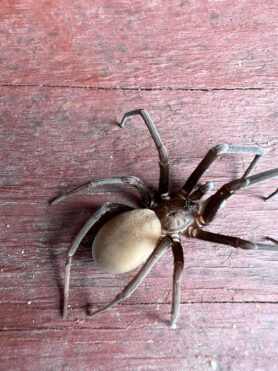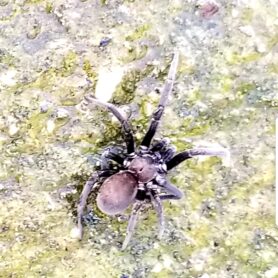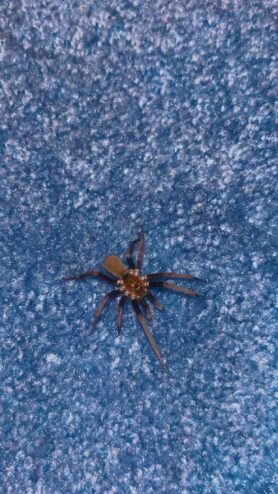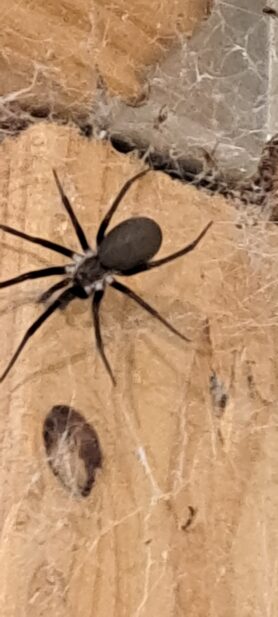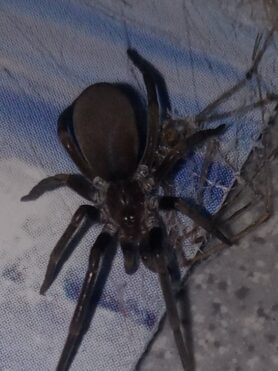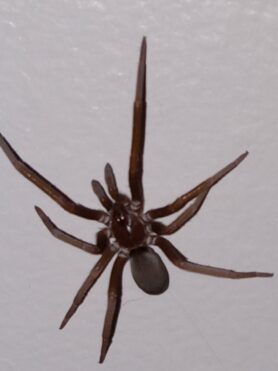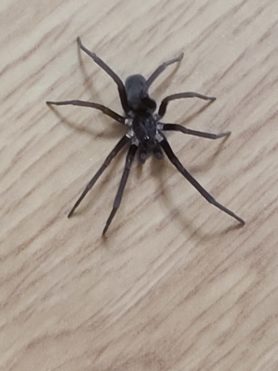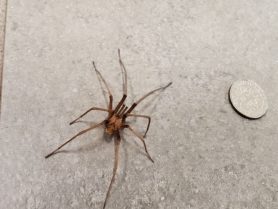Taxonomic Hierarchy
- Kingdom: Animalia
- Phylum: Arthropoda
- Class: Arachnida
- Order: Araneae
- Suborder: Araneomorphae
- Family: Filistatidae
- Genus: Kukulcania
- Species: Kukulcania hibernalis
Common Name (AAS )
)
Southern House Spider
Other Common Names
Crevice Weaver, Cribellate Crevice Weaver, Primitive Cribellate Spider
Author
Nicholas Marcellus Hentz, 1842
Primary Colors
Sightings Overview
There have been 134 confirmed sightings of Kukulcania hibernalis (Southern House Spider), with the most recent sighting submitted on April 3, 2024 by Spider ID member georgio99. The detailed statistics below may not utilize the complete dataset of 134 sightings because of certain Kukulcania hibernalis sightings reporting incomplete data.
- Web: 28% of the time, Kukulcania hibernalis spiders are sighted in a spider web (Sample size: 134)
- Sex: 67 female and 36 male.
- Environment: Kukulcania hibernalis has been sighted 26 times outdoors, and 109 times indoors.
- Outdoors: Man-made structure (23). High foliage (1). Under rock or debris (1). Forest (1).
Location and Range
Kukulcania hibernalis (Southern House Spider) has been sighted in the following countries: Argentina, Bermuda, United States, United States Minor Outlying Islands.
Kukulcania hibernalis has also been sighted in the following states: Alabama, Arkansas, California, Florida, Georgia, Louisiana, Mississippi, North Carolina, South Carolina, Tennessee, Texas, Virginia.
Seasonality
Kukulcania hibernalis has been primarily sighted during the month of May.
- January: 17
- February: 15
- March: 21
- April: 24
- May: 25
- June: 5
- July: 6
- August: 3
- September: 2
- October: 7
- November: 5
- December: 4
Additional Remarks
- The males of this genus are frequently mistaken for “brown recluses” and other species in the genus Loxosceles (family Sicariidae), and persecuted needlessly. Males wander in search of females and may occasionally stray indoors at that time.
- Mated females lay about 200 eggs, wrapping them loosely in a silken sac roughly 15 mm in diameter, and guarding them inside their funnel-like retreat.
- The eight eyes, clustered together on a central “mound” on the front of the carapace, sometimes cause the spider to be mistaken for a primitive spider in the suborder Mygalomorphae.
- Spiderlings of this species are considered “social;” they exhibit sibling recognition, co-operative prey capture and feeding, and formation of aggregations, both after feeding and after dispersal from their mother’s web.
- Females can live for up to 8 years or more; extremely long-lived for an araneomorph spider. They continue to molt even after they’ve reached sexual maturity.
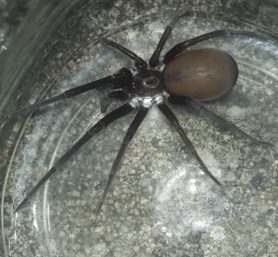 The spider species Kukulcania hibernalis, commonly known as Southern House Spider, belongs to the genus Kukulcania, in the family Filistatidae. Kukulcania hibernalis spiders have been sighted
The spider species Kukulcania hibernalis, commonly known as Southern House Spider, belongs to the genus Kukulcania, in the family Filistatidae. Kukulcania hibernalis spiders have been sighted 